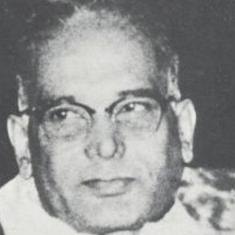Before heading to the Indonesian capital for the 18th edition of Asian Games, Virdhawal Khade, one of India’s leading swimmers, promised at least a couple of medals from him and his contingent, which is perhaps the best fielded by the country for the quadrennial event. And, despite Indian swimming’s aggregate of just two medals in the past seven editions of the Games, Virdhawal’s isn’t an empty, unrealistic promise. It carries the weight of some of the best performances in Indian swimming – all of them occurring in this year.
First among them is Virdhawal’s own sensational triumph over Olympic champion Joseph Schooling to win the 100m freestyle gold at Singapore National Swimming Championships in June. At the same tournament, Sandeep Sejwal, won the 50m breaststroke, bettering his own national record. Sajan Prakash bettered his best timing in the 200m butterfly event to clinch gold at the Malaysian Open in May. Srihari Nataraj and Advait Page, both yet to be 20, have bettered the national best timings in their events.
But all these names are of men. There aren’t any women in India’s 10-member squad in the 2018 edition of Asian Games. Like how there weren’t any in 2014. None in 2010 as well.
Swimming Federation of India secretary Kamlesh Nanavati had told Mumbai Mirror that the Indian Olympic Association denied the women an Asian Games ticket in the team event.
“According to IOA’s rule, the top six in individual and the top eight in team event can earn you a ticket to Jakarta. In the team event, we easily qualify as we are in top eight. But still we are being denied the ticket,” he said.
But only nine women swimmers from India – including two para-swimmers – have competed in the major multi-sport events (Olympics, Commonwealth Games and Asian Games) over the last decade.

“It’s a big worry in Indian swimming,” says former Indian swimmer Nisha Millet.
Nisha was the only woman in the Indian swimming contingent that went to the 2000 Olympics. Since then only two female swimmers – Shikha Tandon (2004) and Shivani Kataria (2016) – have represented the country at the world’s biggest multi-sport spectacle.
“Initially, it was the opposite. The girls used to be better than the guys. Me, my sister Reshma, Ishita (Saha). We were continuously breaking the best Indian performances. And, we were starting to qualify for the Olympics,” she says.
Some of the national records that were set by her peers still stands. No one has, for instance, been able to swim the 50m freestyle faster than Shikha did in 2003.
“People say we must be happy that our records have stood for so long. But no, I want to see the state of Indian swimming improving,” says Nisha.
She reckons the facilities at disposal for the swimmers now are much better than what she had in her days. “My mother used to be my dietician, masseuse. Now you can avail the services of the professionals.”
Why, then, are the female swimmers failing to make a mark at the international stage of late.
Nisha, who runs the Nisha Millet’s Swimming Academy in Bengaluru, reckons the biggest issue is the lack of support from parents. Once the girls reach 10th grade, she says, parents ask them to focus more on studies. Swimming, they think, is a needless distraction.
“I had four good swimmers, who were doing well at the state level in my academy. But they all discontinued at 12th grade. Most of these swimmers want to continue but the parents aren’t letting them. We are literally going backwards in women’s swimming.”
Nisha’s father had sold his house so his daughter could realise the dream of participating at the Olympics. But not many parents today, according to her, are like her father.
Money a concern
Money, she says, is a big concern for the parents. “With Saina (Nehwal) and (PV) Sindhu doing so well in badminton, there’s a league and the prize money that comes with it. But there isn’t a lot of money in swimming.”
It isn’t that the sex ratio of swimmers is skewed towards the male at the junior level. Out of 65 competitive swimmers in Nisha’s academy, for instance, about 45 are girls. But once they reach their mid-teens, parents persuade or sometimes compel them to focus on studies over swimming.
This situation, Nisha hopes, will change. “There’s more support now. You can now find a job in government organisations if you are talented. I know someone who got the prestigious Rhodes scholarship because of swimming. So, we need to make the parents aware that their girls can make a career out of swimming.”
But it will take a while – 10 years, according to Nisha – before an Indian female swimmer can be successful at the international level.










